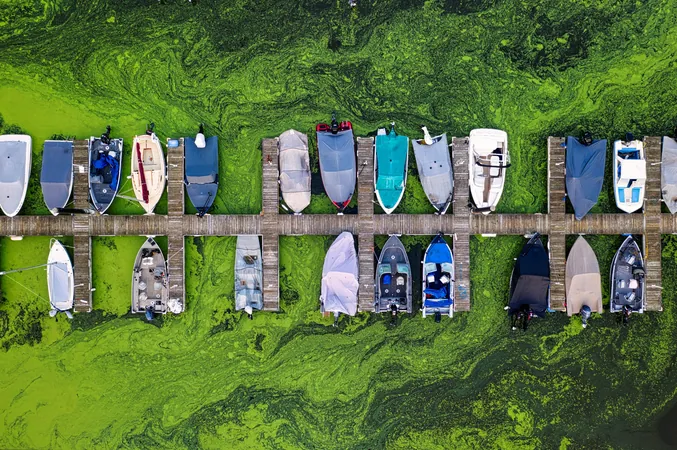
Climate Emergency: Droughts in Patagonia Fuel Toxic Algal Blooms
2025-01-07
Author: Liam
Introduction
Patagonia, renowned for its breathtaking fjords and rich biodiversity, is facing a grim environmental crisis that calls for urgent attention. These waters, which are home to numerous endemic and endangered species, also support an essential aquaculture sector—ranking as the world’s second largest producer of farmed salmon, following Norway. However, climate change-induced droughts are wreaking havoc on this delicate ecosystem.
Study Overview
Recent research published in *Frontiers in Marine Science* sheds light on the alarming consequences of droughts in the Reloncaví Fjord of Northern Chilean Patagonia. Associate Professor Lauren Ross and Ph.D. researcher Elías Pinilla from the University of Maine conducted a detailed study comparing the environmental conditions during a normal year in 2018 and a severe drought year in 2016, which resulted in catastrophic losses for fish populations—40,000 tons of salmon perished, causing staggering economic damages amounting to $800 million.
Salinity Changes
The study unveiled a noteworthy shift in the fjord's salinity profiles during episodes of drought, associated with decreased freshwater influx. The research found that Total Exchange Flow—essentially, the transfer of water and salinity between the ocean and the estuary—dropped by 14.3% during the drought year compared to 2018, with an even steeper decline of 16.7% in the flow exiting to the open sea.
Impact of Drought Conditions
In 2018, river discharges constituted 74% of the Total Exchange Flow, while tidal and wind influences were relatively minor at 17% and 9%, respectively. However, in 2016, the contribution of tides and wind surged to 21% and 16%, underscoring the critical role of these factors in mixing water layers during periods of minimal river input. This disruption lead to a dangerous destratification of the fjord, merging lower salinity surface waters with heavier, saltier water below, which can significantly alter the ecological balance.
Algal Blooms
The research pinpointed a troubling connection between salinity levels and harmful algal blooms of species such as Pseudchatonella spp. and Alexandrium catenella. Spring conditions typically saw A. catenella blooms flourish during stratified periods; yet, in contrast, drought conditions triggered a summer proliferation of Pseudchatonella algae. These toxic blooms pose a severe threat to the aquatic ecosystem as they obstruct sunlight essential for deeper marine life and contribute to hypoxic conditions by depleting oxygen levels through decomposition.
Future Projections
With climate projections indicating that drought events could double in frequency by 2060, exacerbated by escalating El Niño phenomena and declining precipitation patterns, the future of the Reloncaví Fjord looks increasingly bleak. Researchers predict a 10% drop in annual freshwater input, further intensifying the growth of harmful algal species and jeopardizing local biodiversity, fishing, and aquaculture industries.
Conclusion
As the realities of climate change deepen, rapid and decisive action is essential to mitigate the impact of these environmental shifts on Patagonia's precious fjord ecosystems. Will we heed the warnings of scientific research before it’s too late? The stakes for Patagonia’s future couldn’t be higher!



 Brasil (PT)
Brasil (PT)
 Canada (EN)
Canada (EN)
 Chile (ES)
Chile (ES)
 Česko (CS)
Česko (CS)
 대한민국 (KO)
대한민국 (KO)
 España (ES)
España (ES)
 France (FR)
France (FR)
 Hong Kong (EN)
Hong Kong (EN)
 Italia (IT)
Italia (IT)
 日本 (JA)
日本 (JA)
 Magyarország (HU)
Magyarország (HU)
 Norge (NO)
Norge (NO)
 Polska (PL)
Polska (PL)
 Schweiz (DE)
Schweiz (DE)
 Singapore (EN)
Singapore (EN)
 Sverige (SV)
Sverige (SV)
 Suomi (FI)
Suomi (FI)
 Türkiye (TR)
Türkiye (TR)
 الإمارات العربية المتحدة (AR)
الإمارات العربية المتحدة (AR)